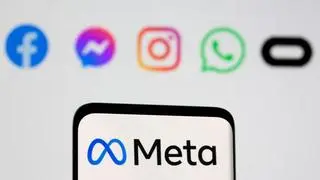Dialling customer service is passé. Get ready to talk to bots over messaging apps. At its annual F8 Developers Meet this week, Facebook officially launched an application programming interface (API) for its messenger.
This means businesses can build their own chatbots on the platform for customer service. Publishers can deliver breaking news. Concierge services can deliver services. The possibilities are immense.
“The announcement from Facebook is an expansion in scope for the Messenger app — it can integrate with many B2C sites and applications and there is some value to brands and customers in that,” says Kashyap Kompella, Research Director at independent analysis firm Real Story Group.
Indian start-ups such as LookUp, which connects users with local merchants via chat, are excited by the announcement. “This is definitely an opportunity for LookUp to partner with Facebook as they are opening up the platform,” says Deepak Ravindran, its founder and Chief Executive.
LookUp already uses social networks to deliver its services. It has a tie-up with Twitter to let its users tweet to get things done through its handle@lookuplite.
The expectation is that customer service will move away from social networks onto messaging apps. So, businesses have to get on as well. After all, FB Messenger has nearly 900 million users, and WhatsApp over a billion to Twitter’s 300 million. Even young, home-grown chat app Hike has over 100 million users already.
That’s why Ravindran says: “We will be building Lookup lite across all these networks just like we did with Twitter and become omnipresent.”
Hike, which has a virtual assistant called Natasha, also has big plans around bots. “Natasha was an early experiment built for Hike at a time when Artificial Intelligence was not easily seen on a platform,” says founder Kavin Bharti Mittal. “Bots are an important focus area for Hike and we will share plans in time on them.”
Analyst Kompella tempers the enthusiasm on deploying chatbots for customer service. “It took us a long time to build a basic modicum of intelligence into Interactive Voice Response (IVR) systems. Similarly, chatbots for customer support and other interactions will have a long trajectory.”
Some basic customer support jobs can be handled by algorithms and bots, says Kompella. “But there is greater value in advertising and marketing scenarios by enabling better personalisation and recommendations,” he says. “For start-ups, this will be bigger than just customer support.”
Corrupted by usersThere certainly are problems with chatbots. Their responses can be too automated. Or, if the machines are programmed to learn from the humans they interact with, there can be dangerous consequences. For instance, Microsoft’s chatbot Tay, which is being tested on Twitter as @TayandYou, repeated racist insults fired at it. Microsoft had to quickly take it offline.
“There is a long way for AI to go,” admits Hike’s Mittal. “Tay and similar experiments will lay the foundation for the more substantial questions AI developers will need to deal with.”
Facebook, too, has said it will initially use more human capability than artificial intelligence for its virtual assistant M.
Says LookUp’s Ravindran, “It takes time for AI to develop. We have taken a different route to understand queries and answer them using humans and are slowly building on it.” Right now, LookUp uses 80 per cent human and 20 per cent automatic responses. But, says Ravindran: “Our goal is to change this ratio to 60-40 and gradually scale up to 100 per cent.”







Comments
Comments have to be in English, and in full sentences. They cannot be abusive or personal. Please abide by our community guidelines for posting your comments.
We have migrated to a new commenting platform. If you are already a registered user of TheHindu Businessline and logged in, you may continue to engage with our articles. If you do not have an account please register and login to post comments. Users can access their older comments by logging into their accounts on Vuukle.